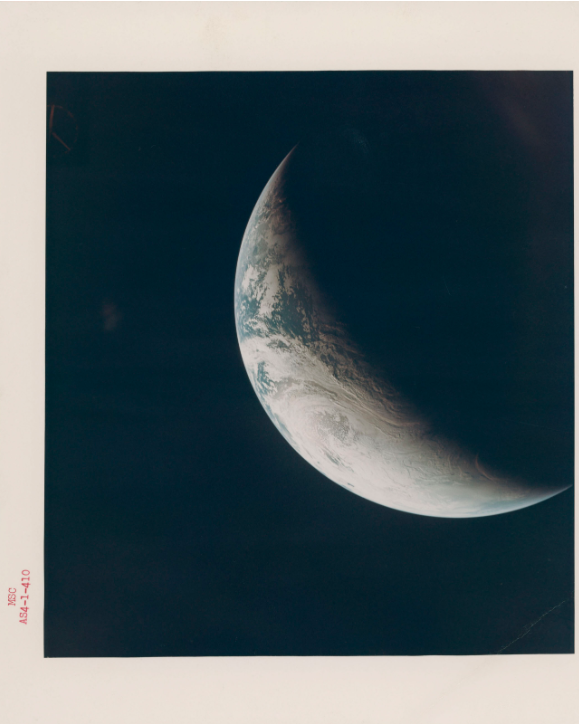Space Mission
Apollo 4, November 9, 1967, 005:04:00 GET
Photographer
Taken by an automatic Maurer 70mm camera aboard the unmanned Apollo 4 spacecraft
Photo Description
Vintage chromogenic print on fiber-based GAF paper, 20.3 x 25.4cm (8 x 10in), numbered “NASA G-68-5819” (NASA Goddard) in black in bottom margin [NASA AS4-1-200]
Essay
The Saturn V rocket made two orbits of the Earth before the third stage booster fired to send the capsule out in a vast ellipse peaking at 9,767 nautical miles, offering a fantastic sight to the automatic camera. Until then the highest altitude color photographs of the Earth had been recorded by the Gemini 11 crew using the rocket on their Agena target vehicle to raise their apogee to 741 nautical miles (1,373 km), the highest Earth orbit ever reached by a crewed spacecraft.
“Coastal Brazil, Atlantic Ocean, West Africa, Sahara, looking northwest, as photographed from the unmanned Apollo 4 (Spacecraft 017/Saturn 501) Earth-orbital space mission. This picture was taken when the Spacecraft 017 and the Saturn IVB stage were orbiting Earth at an altitude of 9,060 nautical miles” (original NASA caption for AS4-1-200).
“This is a sight astronauts will see on the way to the Moon,” Samuel Phillips, Director of the Apollo Program, NASA, commented. “This photograph was one of 755 exposures made at 10.6-second intervals beginning 4 hours 28 minutes after liftoff. Using Eastman Kodak Ektachrome MS, type S.O.-368 film, it was taken by a Maurer Model 220G 70-mm sequence camera.”
